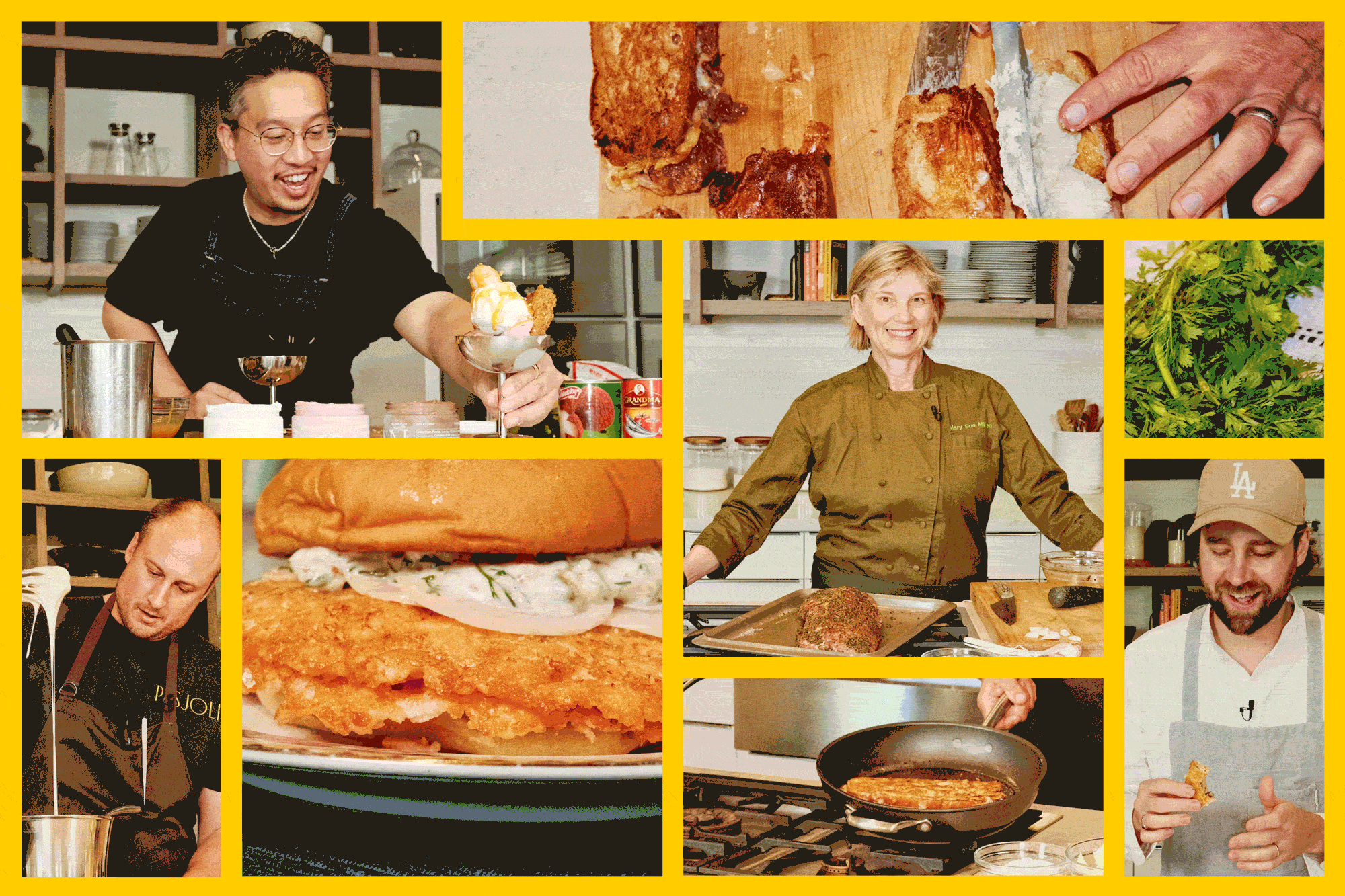Campus Chefs Work on Cum Laude Cuisine
- Share via
AMHERST, Mass. — Gourmet meals in college dining halls may seem like a paradox.
But at a weeklong competition at the University of Massachusetts last May, college chefs whipped up culinary delights that would actually make students look forward to cafeteria food.
“It sure beats what I have in my freezer--hot dogs, nachos and things I can throw in the microwave,” said Nathan Pekala, a college taste tester, as he wolfed down mounds of teriyaki beef, roasted corn, bean sprout melange and globs of baked brie in phyllo dough with fresh berry sauce and grilled pineapple.
The Collegiate Cuisine 2000 conference gave more than 100 chefs, most of whom work in college dining halls, the chance to bone up on the latest trends in university cuisine.
With a captive clientele largely on meal plans, college cafeterias have long been complacent and bland, conference organizers acknowledged.
But changing student demographics and greater financial pressures are forcing college dining services to display food more enticingly, spice it more artfully and serve more vegetarian and ethnic fare prepared to order, like a fine restaurant.
“Before, you put all these vegetables in a wok and you called it Chinese food. Now they want black bean sauce. They want oyster sauce,” said Kenneth Toong, the Hong Kong-born head of dining services at the University of Massachusetts.
During the conference, there was a competition with chefs testing their recipes before a panel of judges. Several students were also picked to taste and evaluate the creations.
There were no dishes with water-logged lima beans or mashed potatoes with a Lake Tahoe of gravy.
Instead, the mystery meats were ostrich and rabbit. The asparagus was so crisp it snapped. And the potato jalapen~o calamari quesadilla with red onion marmalade was more than a mouthful.
At the judges’ table, chief instructor David St. John-Grubb (pronounced Groob, not Grub) prodded, poked, nibbled and scrutinized the creations the way others might ponder a Renoir.
In the kitchen, dozens of chefs--all in traditional tall white hats and coats--were feverishly creating appetizers, entrees, side dishes and desserts with ingredients given to them.
Allan Lowen, a chef from Rutgers University, put final touches on plates of teriyaki beef on a bed of wild mushrooms with snow peas, red and yellow peppers and Oriental noodles tied together with a green onion.
Lowen was most impressed at the workshops by “all the different colors and different blends and different textures.”
The gold-medal meal included the calamari quesadilla, ostrich (skewered and grilled), marinated lamb roulade, and carrot cake with orange bourbon glaze.
The chef said nearly all the dishes can be duplicated at typical college dining halls with the right training and effort.
But Alex Batten, a 21-year-old vegetarian, said he and some other students are a touch skeptical.
“My initial reaction was, ‘You’re never going to see this food in the dining commons,’ ” he said. “But I think some of the elements would really carry over.”
More to Read
Eat your way across L.A.
Get our weekly Tasting Notes newsletter for reviews, news and more.
You may occasionally receive promotional content from the Los Angeles Times.










